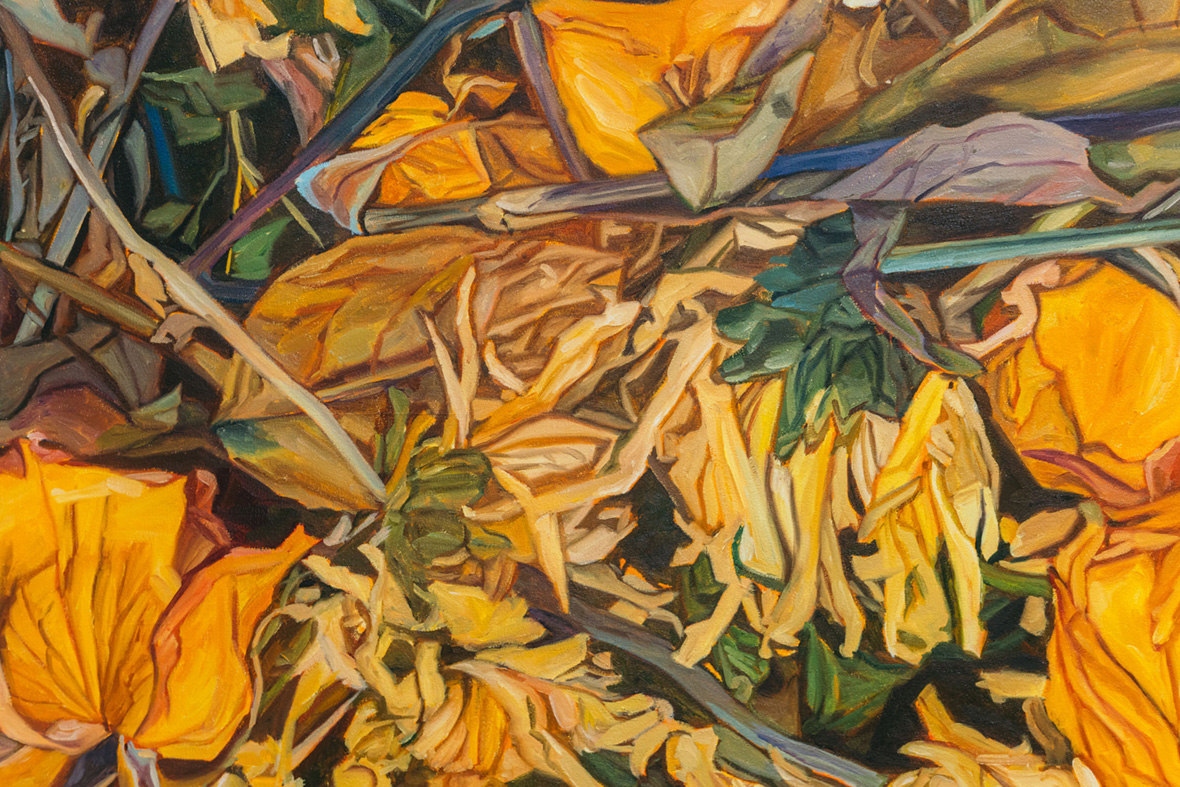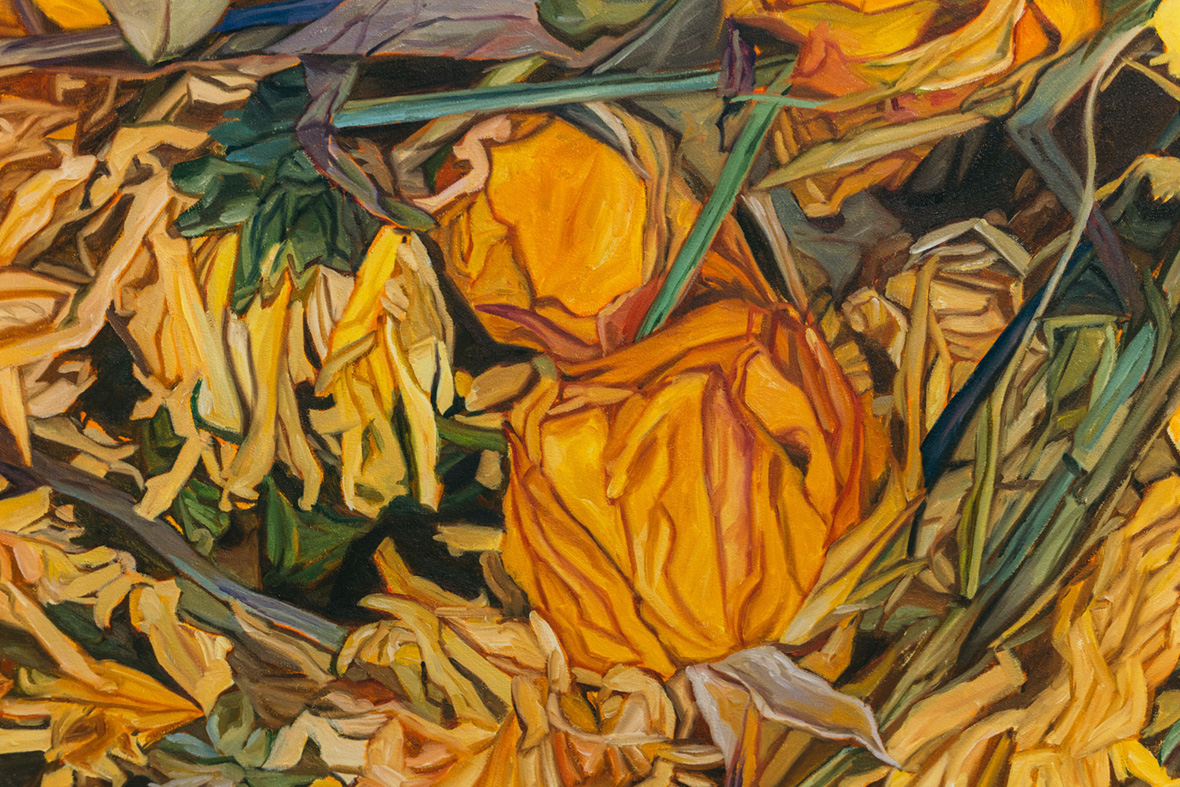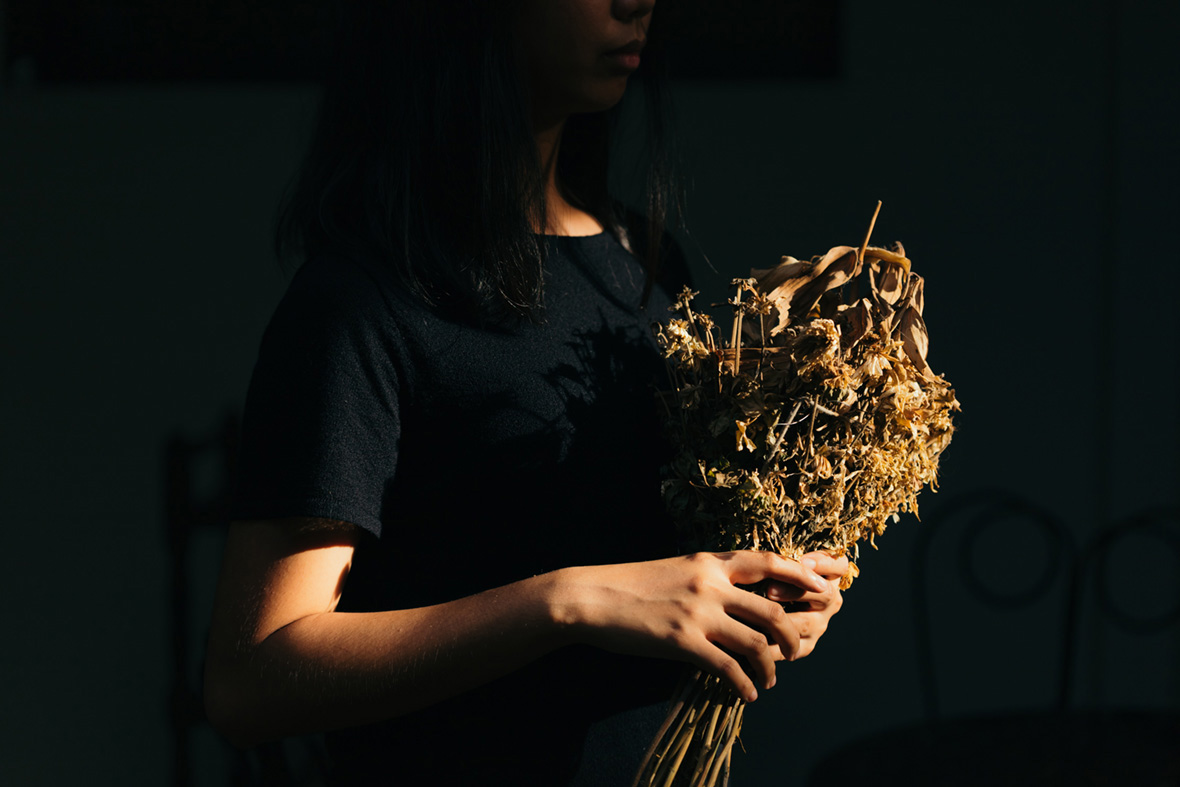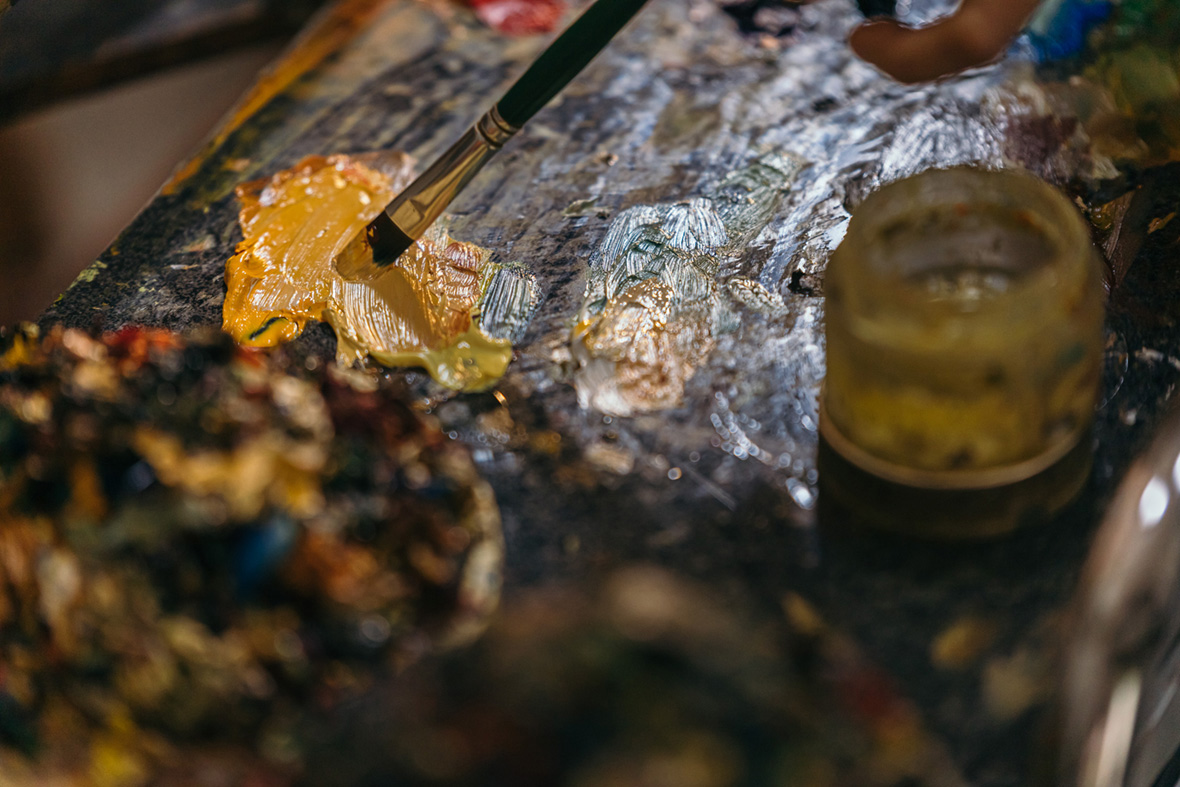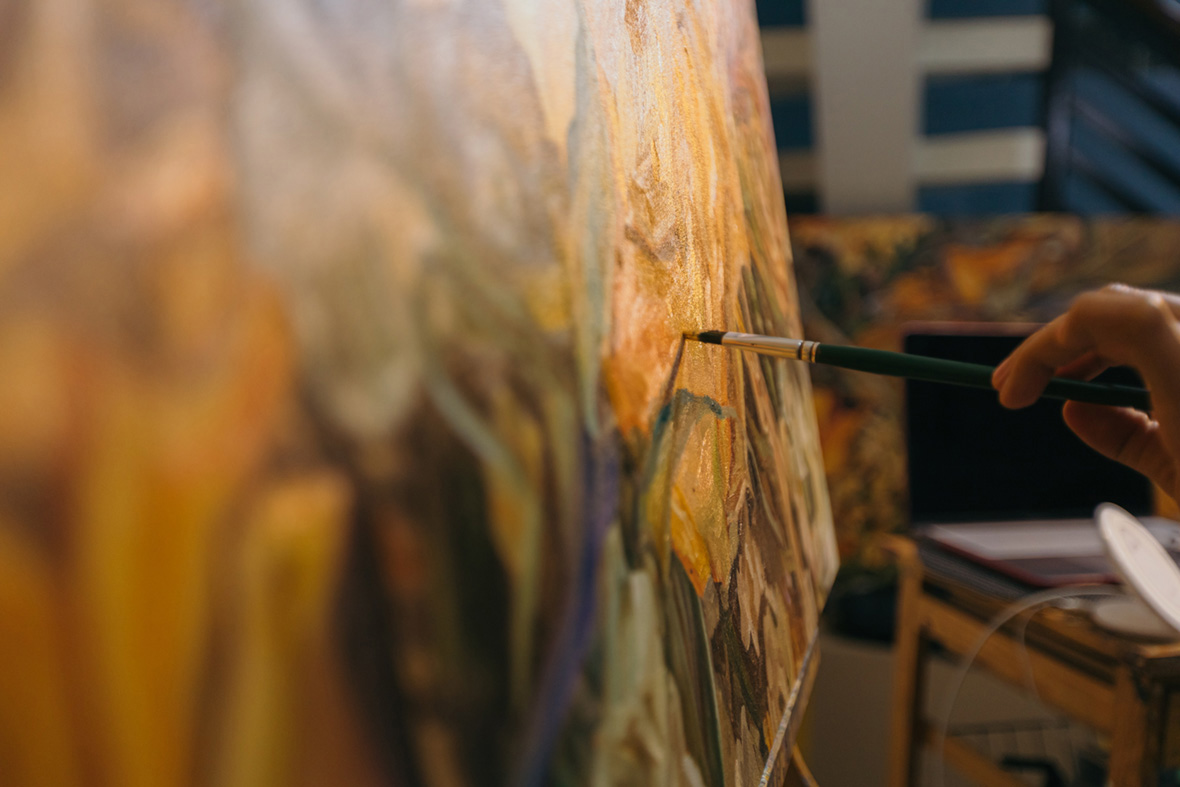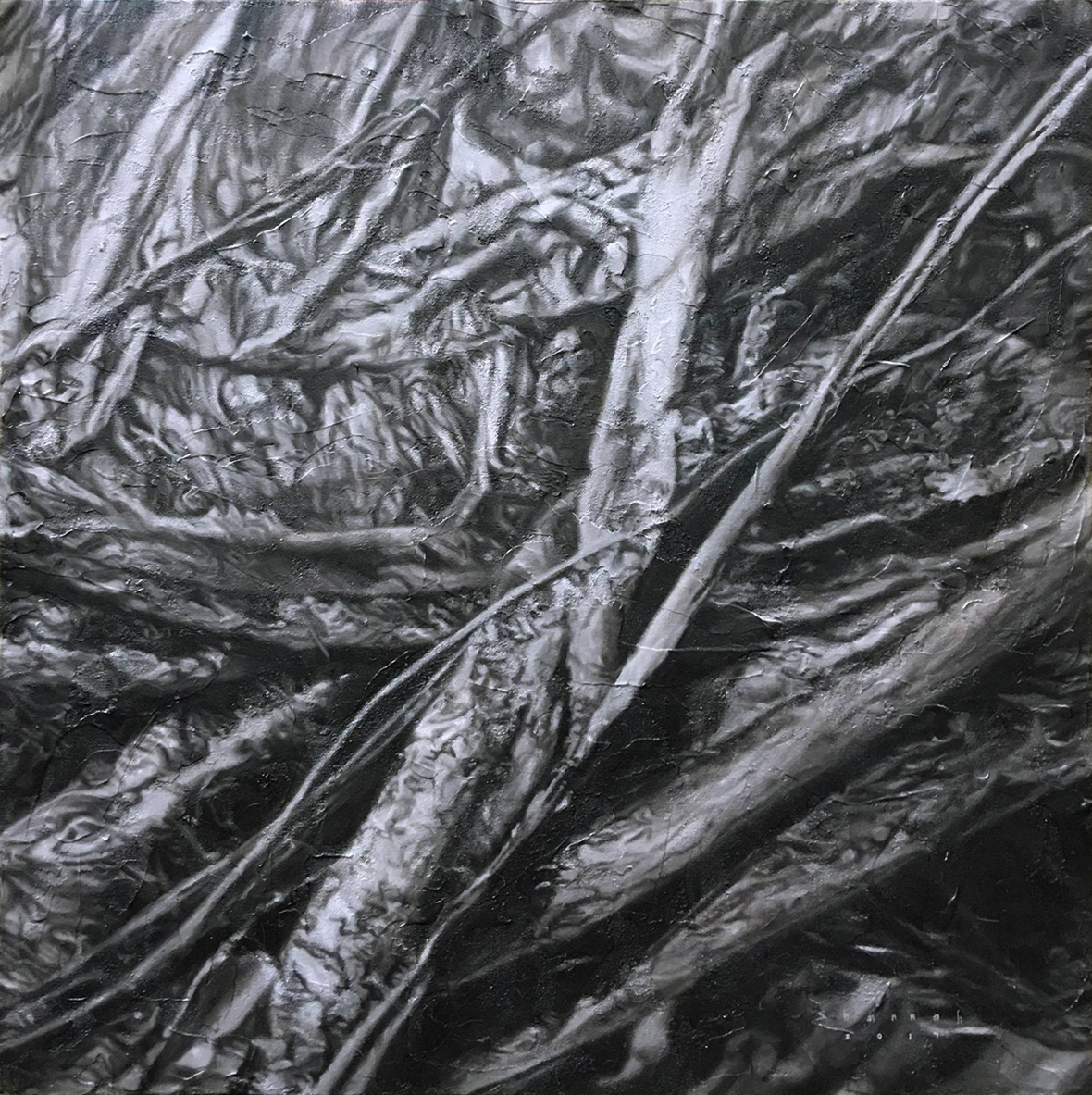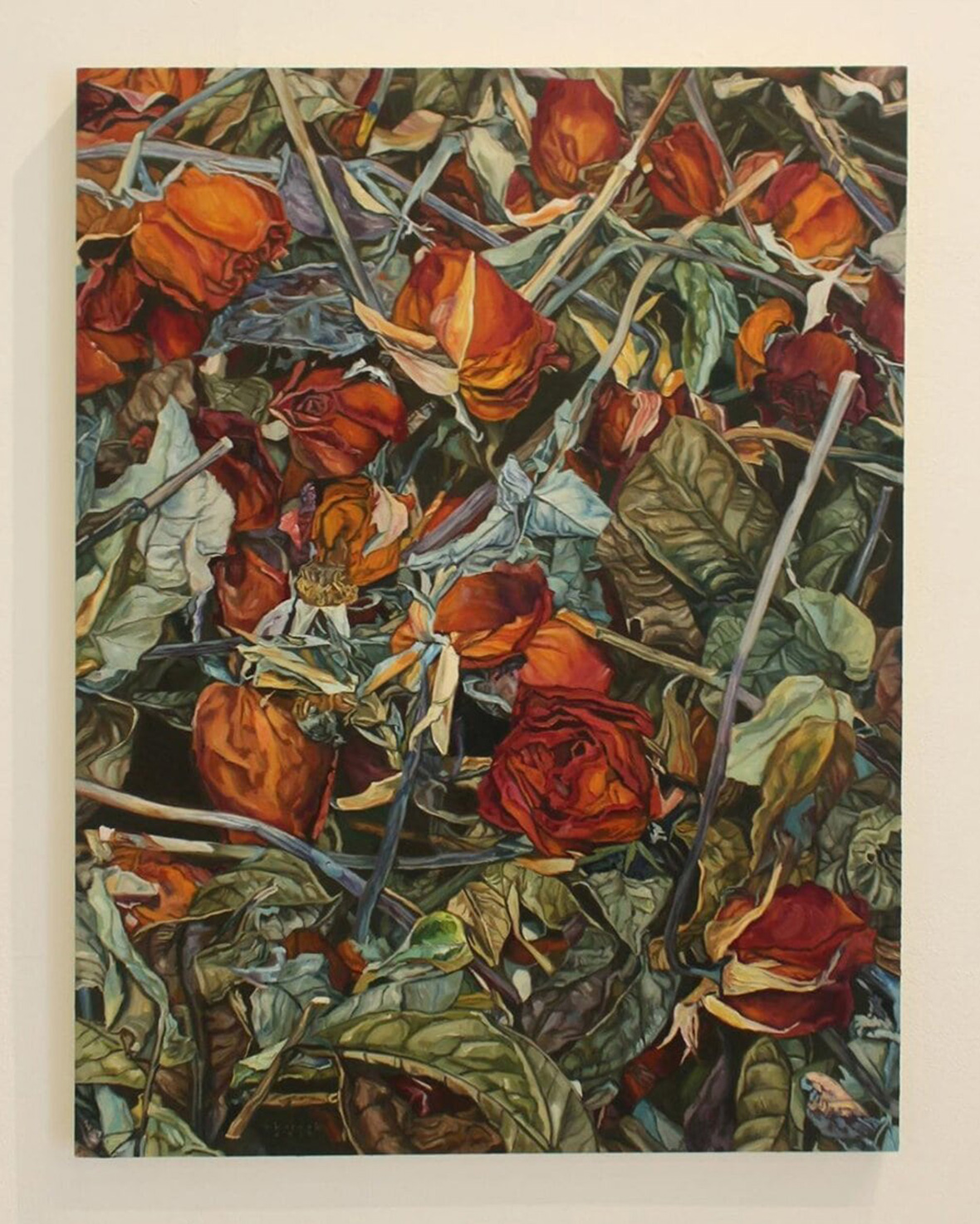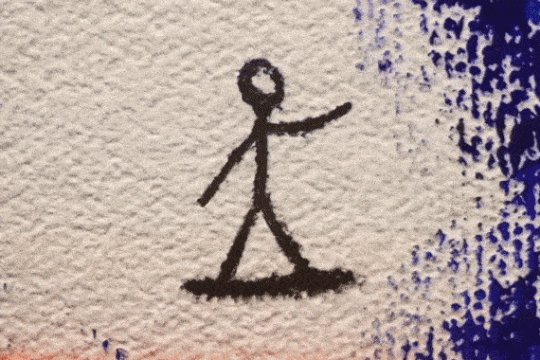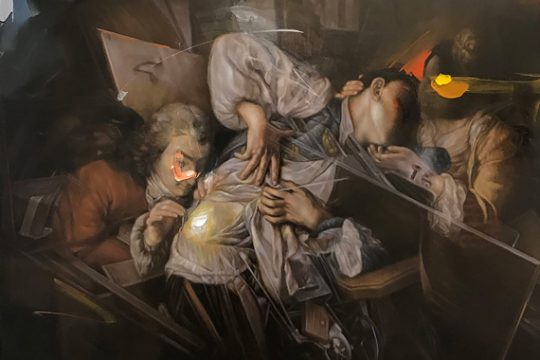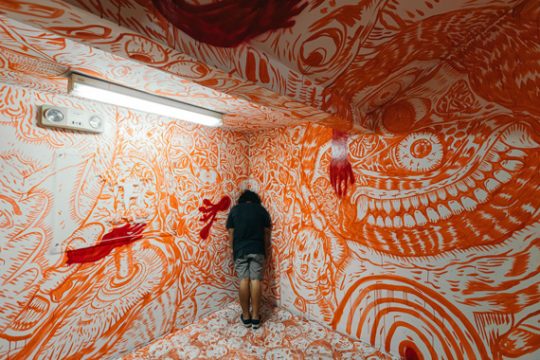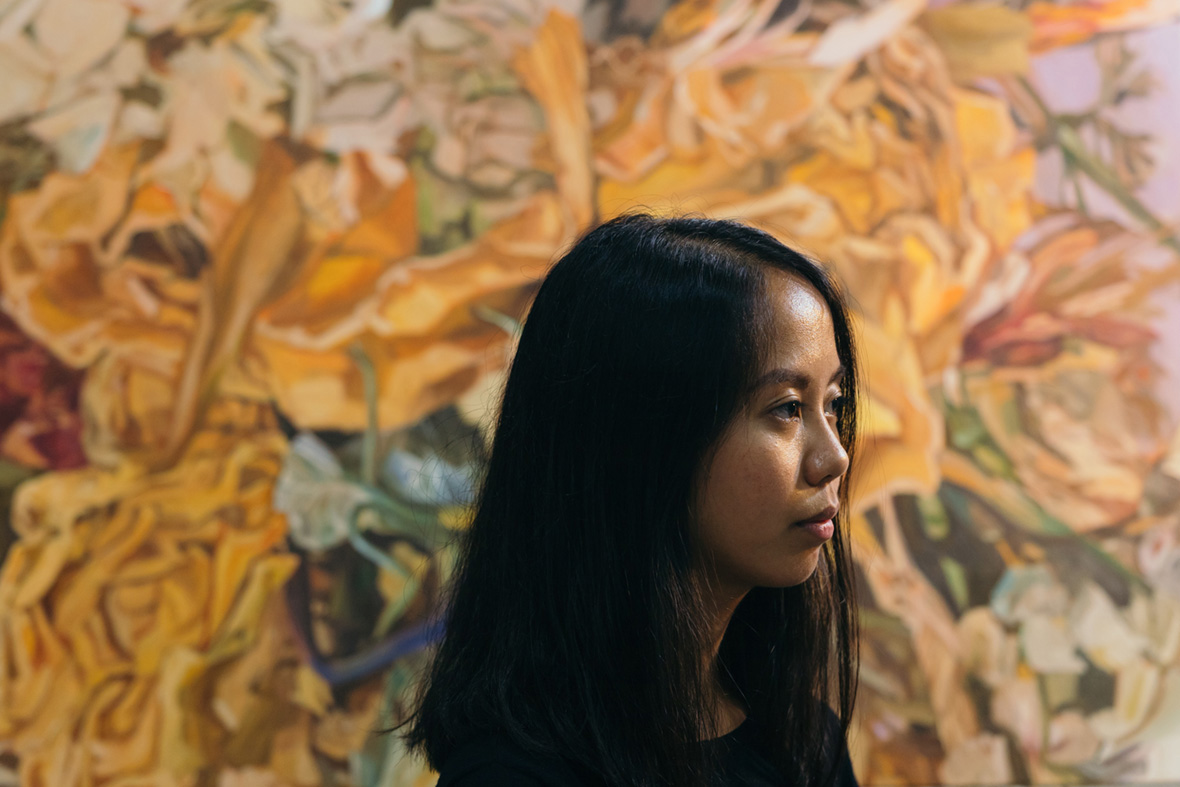
A still life painting doesn’t have to be motionless. The oil paintings of Shannah Orencio are calm and meditative but there’s still a sense of movement in them. Boxes of dried flowers lie in piles, forming intricate patterns and a layered sense of depth. While the flowers are dead, their beauty and life are suspended in timelessness.
谁说静物画一定是静止沉闷的?Shannah Orencio 的油画作品平静而深沉,但仍有一种活力。成叠的干花、复杂的图案和富有层次的深度。花已然枯萎,可它们的美和生命悬于永恒。
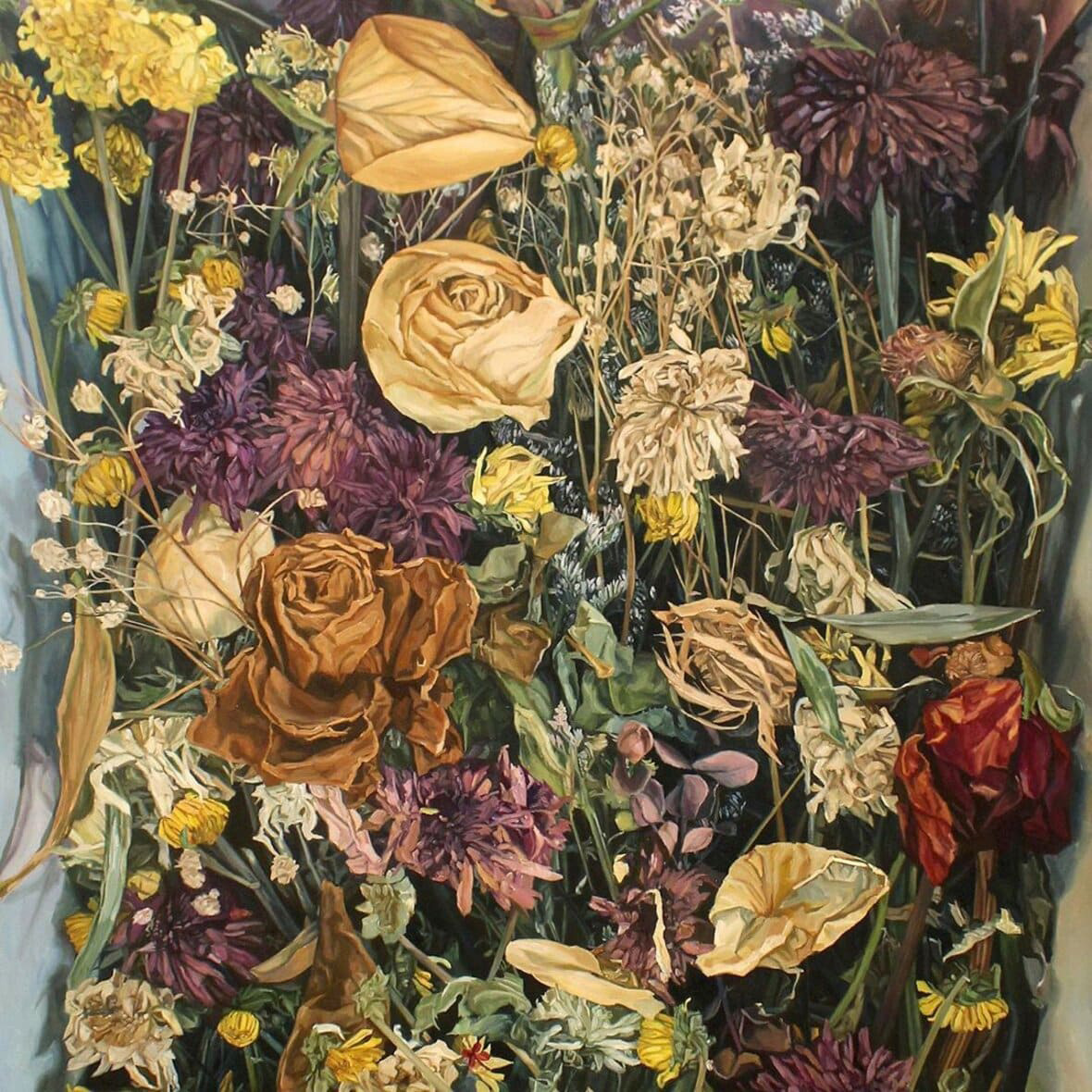
These studies in decay—literally images of “dead nature,” as still lifes are known in many other languages—prompt people to question why they dispose of things so quickly. “I want to show that flowers can still be beautiful after they dry out. I don’t understand why people just throw them away,” says Orencio. Her paintings are also memorials to friends and loved ones. “Some of the flowers I paint are gifts from close friends, so I get to remember them while I’m painting. Some of the flowers also remind me of people I care about that passed away recently and are a tribute to them.”
这些对“衰败”主题的思考——它们是实实在在的“静物肖像”(直译为“死去的自然”),就像“静物”在许多其他语言中被熟知的那样——促使人们质疑为什么大家这么快就把它弃之不顾。“我想告诉大家,花干了之后依然可以是美丽的存在。我不明白为什么人们把它们扔掉。” Shannah 说。她的画也是对朋友和亲人的纪念。“我画的一些花是好朋友送的礼物,所以在画画的时候会想起那些朋友。有些花也让我想起了最近去世的我在乎的人,亦是对他们的致敬。”
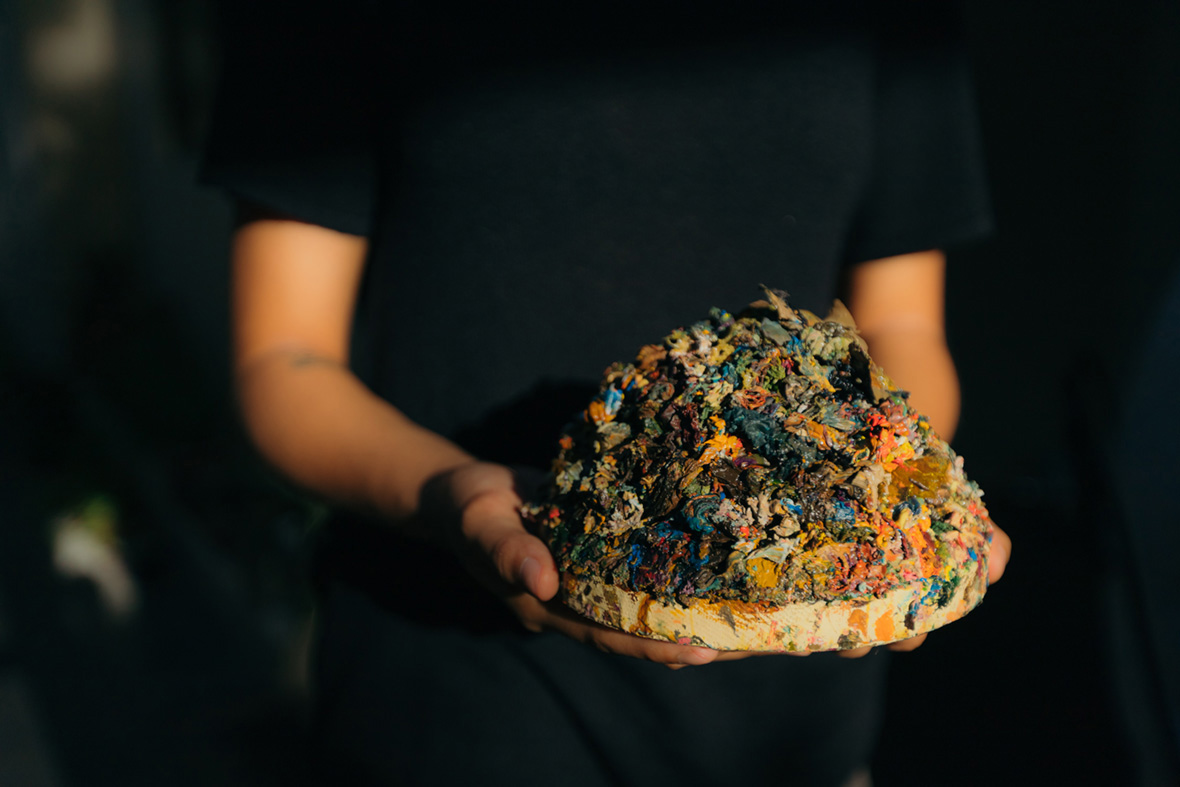
As the daughter of the well-known painter Jim Orencio and goddaughter to Joven Cuanang, owner of the highly-respected Pinto Museum just outside Metro Manila, she’s art royalty. Her dad bought her lots of sketchbooks and crayons and pencils but never pushed her toward art. “He took me to exhibits and stuff when I was young, but he pretty much let me do my own thing,” she recalls.
她是著名画家 Jim Orencio 的女儿,也是大马尼拉城外备受尊敬的平托博物馆(Pinto Museum)主人 Joven Cuanang 的教女。她爸爸给她买了很多素描本、蜡笔和铅笔,但那从来没有引她走向艺术。“我小的时候,爸爸会带我去看展览什么的,但他几乎都让我做自己的事情。”她回忆说。
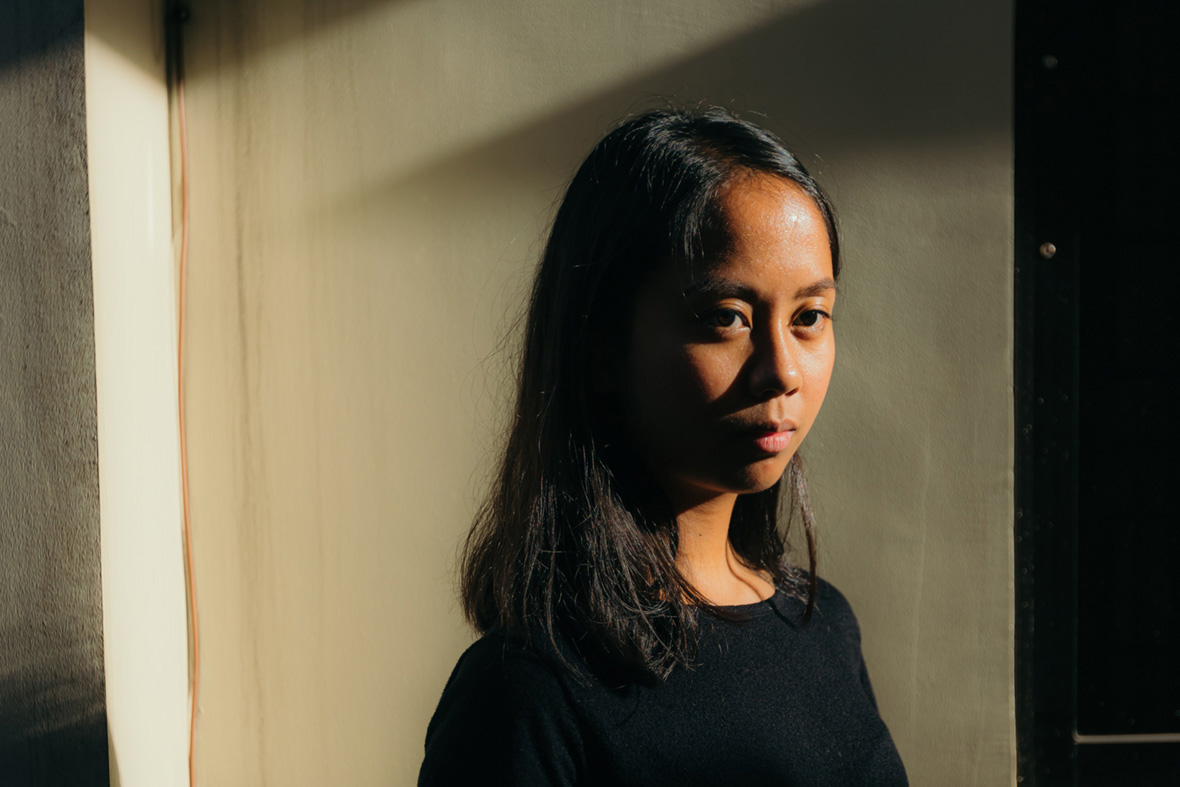
Despite that pedigree, Orencio wouldn’t take painting seriously until college, where she learned how to use oil paints in her second year. “I still remember that first time I put the brush to canvas, and the smell of the cheap linseed oil and turpentine.”
One year during holidays, she grabbed a spare canvas from her dad and decided to practice painting Filipiniana, a colonial-era style of art focused on portraits of Filipinas wearing traditional Filipiniana dresses. And although she only finished the face, her take on the traditional style impressed Cuanang. He asked her to finish it and bought it. “It was my second year in college, the first time I ever got paid for something,” she recalls. “It created a domino effect that got me into painting.” Other collectors saw her work hung in Cuanang’s home and commissioned more from her, so she started freelancing on the side while still in school.
尽管是艺术世家,但 Shannah 直到大学才开始认真学习绘画,在大学的第二年她学会了如何使用油画颜料。“我还记得我第一次把画笔放在画布上,还有廉价亚麻油和松节油的味道。”
有一年假期,她从父亲那里拿了一块备用的画布,决定练习“菲律宾人像画”,这是一种殖民时期的艺术风格,专注于当地人穿着传统菲律宾服装的肖像画。虽然她只做完了人脸的部分,但她独特的风格让 Joven Cuanang 深深折服,他让她继续画完全部,然后出资买下了它。“那是我大学的第二年,也是我第一次获得报酬。”她回忆道。“它创造了多米诺效应,让我开始画画。”其他收藏家看到她的作品挂在 Joven Cuanang 的家里之后,开始委托她做更多的作品,所以 Shannah 在上学的时候就开始兼职了。
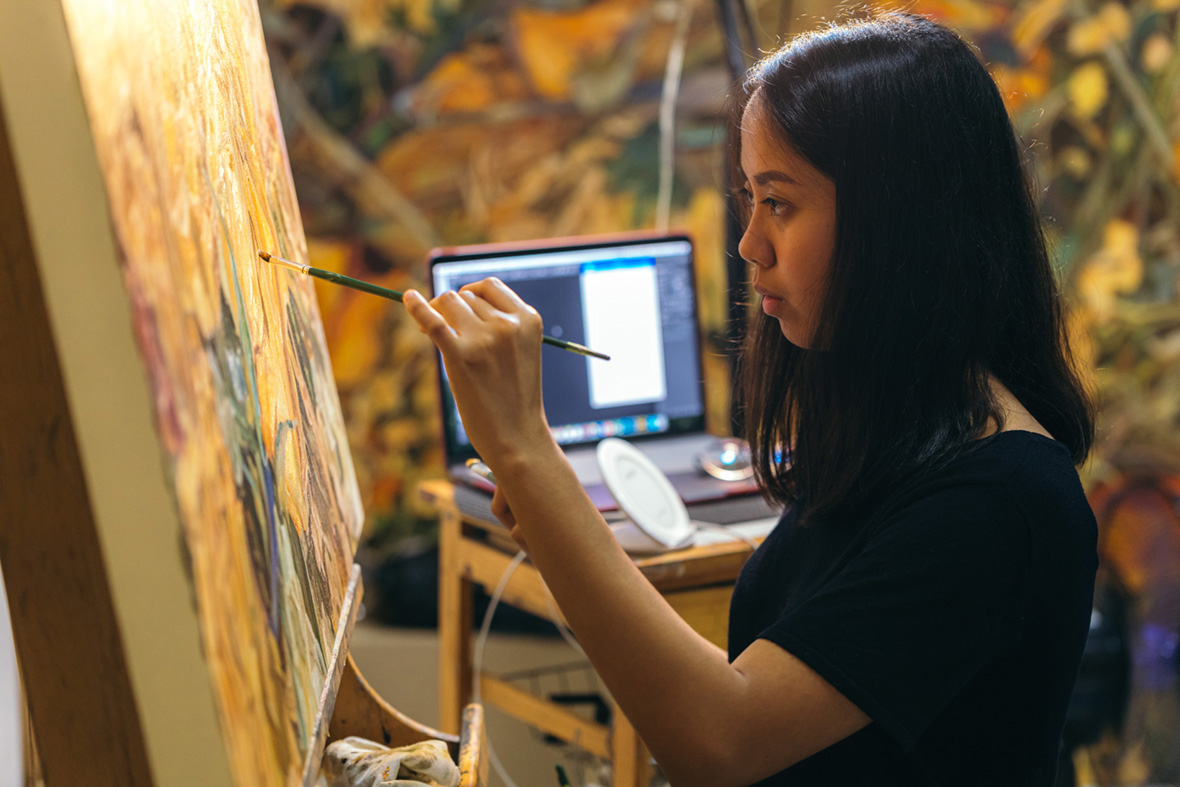
Orencio has worked in a variety of art styles so far. She painted Filipinianas for a while, incorporating flowers and vintage-style backgrounds. But then her work moved into an unexpected direction: her canvases began to fill up with images of black-and-white garbage bags. These works were the culmination of her concern with today’s environmental issues, and her approach to composition and shapes during this time formed the groundwork for the floral art she creates now.
迄今为止,Shannah 已经尝试过多种艺术风格。她画了一段时间的“菲律宾人像画”,融合了鲜花和复古风格的背景。但后来她的作品进入了一个意想不到的方向:她的画布上开始堆满了黑白垃圾袋的图片。那些作品是她对当今环境问题关注的顶峰时期,在那段时间里,她对构图和形状的处理为她现在创造的花卉艺术奠定了基础。
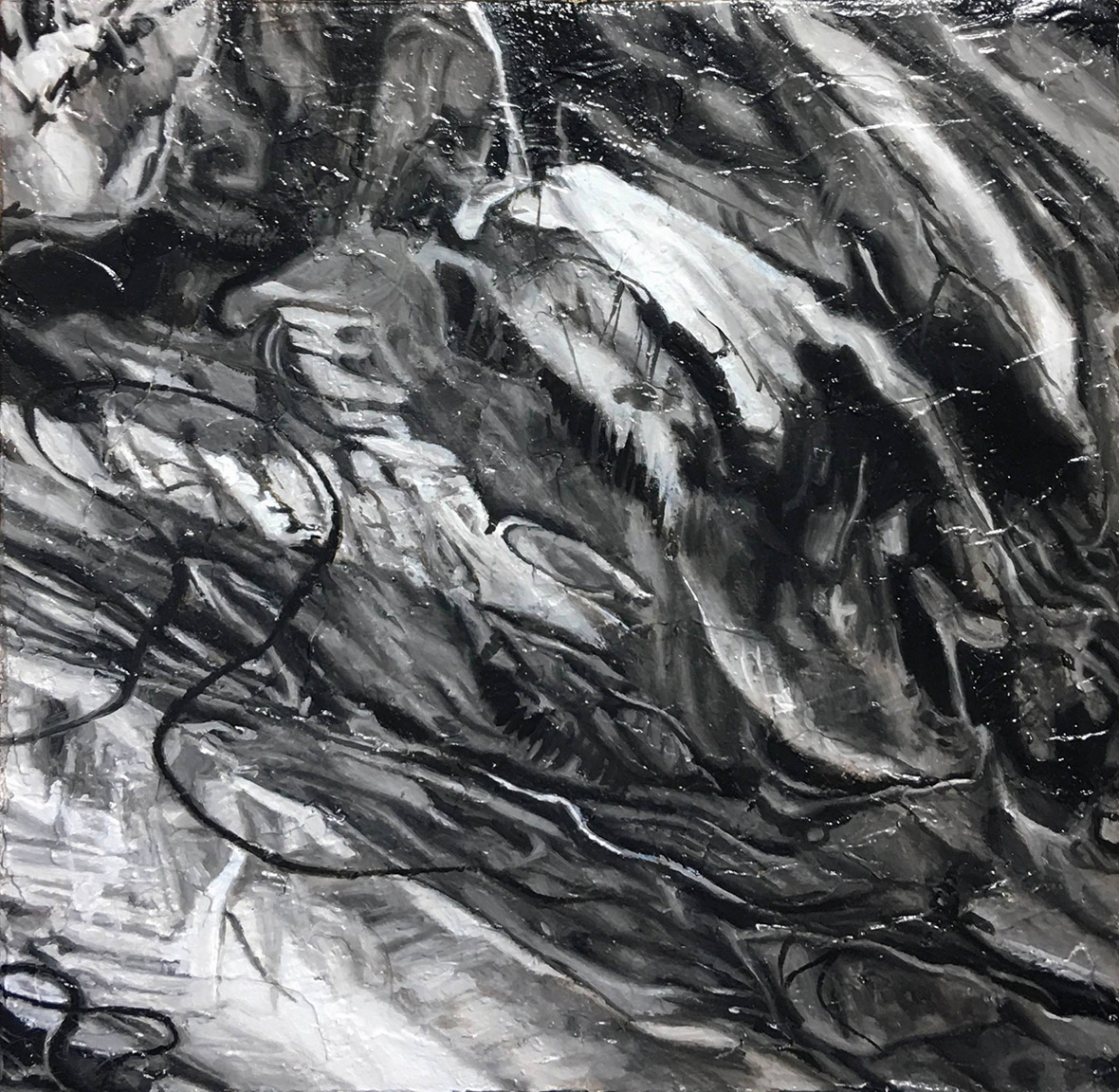
Considering the constant evolution of Orencio’s visual vocabulary, the connection between her work isn’t often immediately obvious, but everything is linked. For example, the garbage bag and flower series are both focused on the study of decay and ask viewers to reevaluate their relationship with waste. In her art, it’s common for concepts from one series to flow into the next. “As I paint, I’m always thinking about what’s next,” she says. “I like my work to tell a story over time. But I’m not opposed to following inspiration where it takes me either.”
随着 Shannah 视觉表达层面的不断演变,其作品之间的联系也变得日渐疏离,但实际上一切都相互关联。例如,垃圾袋和花卉系列都专注于“腐烂”,并要求观众重新评估他们与废弃物的关系。在她的艺术中,系列之间转变的概念很常见。“当我画画的时候,我总是在思考接下来会发生什么,”她说。“我喜欢我的作品随着时间的推移讲述一个故事。但我也不反对让灵感自由发展。”
Like our stories? Follow us on Facebook and Instagram.
Instagram: @shannahorencio
Contributor: Mike Steyels
Photographer: Jilson Tiu
Chinese Translation: Chen Yuan

